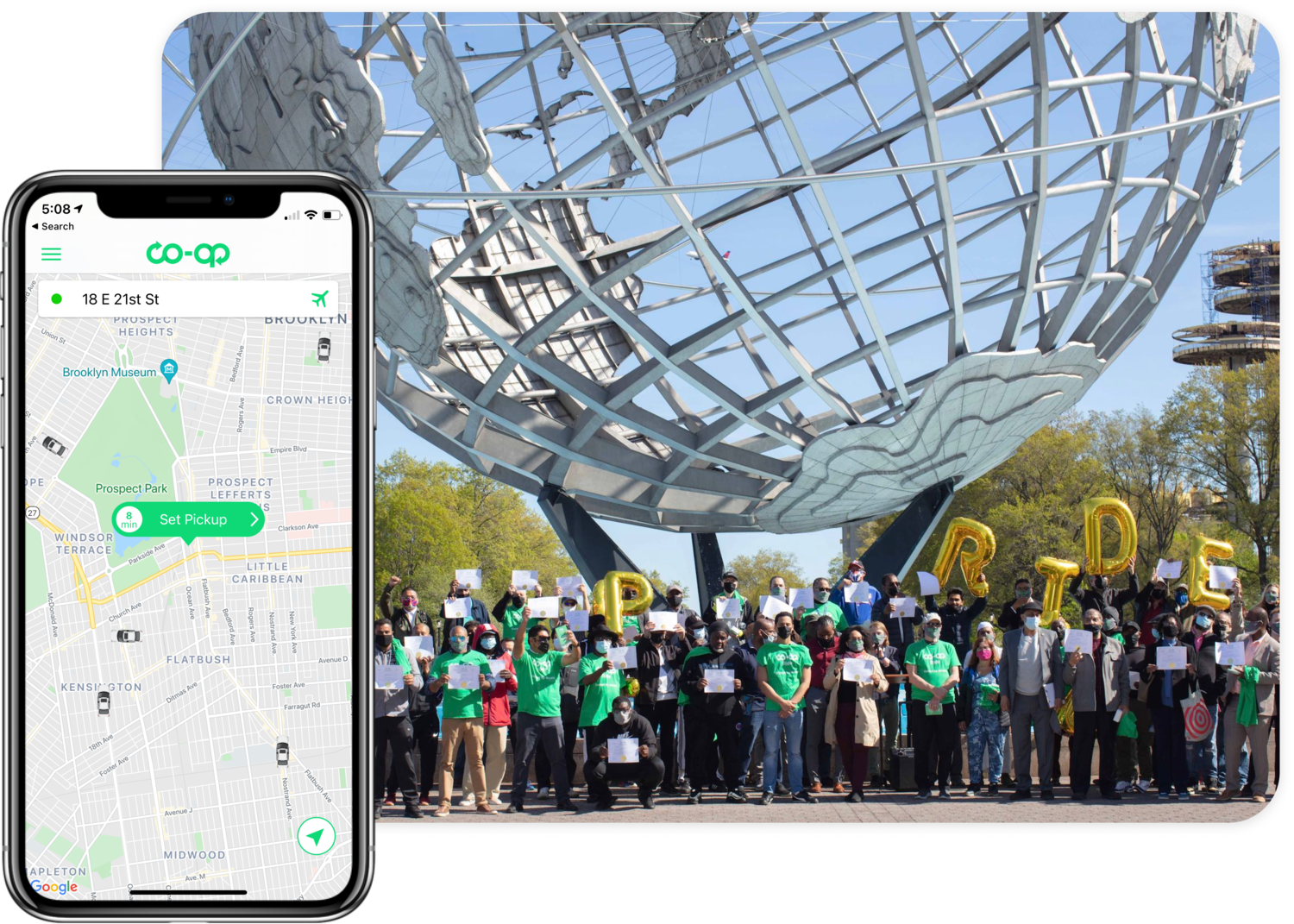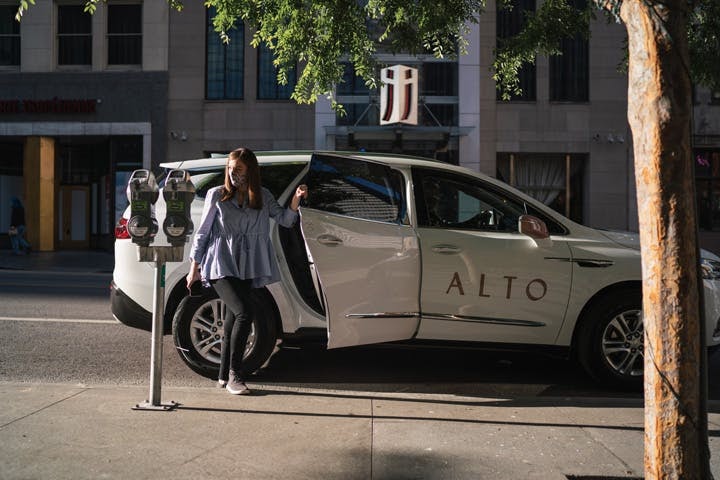The ridesharing industry has been around for a while, and yet Uber and Lyft have remained the top dogs holding the largest shares of the market in the U.S. While some Uber competitors have come and gone, some have managed to hold on – and others are popping up, too.
Do smaller startups (and even some of the bigger ones) have what it takes to dethrone Uber and Lyft? Can there be a significant change to the industry to allow for innovation instead of sticking with what we know?
And if you’re interested, click here to learn how to start your own rideshare company. We’ve got great partners in the insurance space and software development that we can connect you with.
Smaller Platforms Are Taking Hold
Smaller platforms are starting to take hold in their respective markets. In some cases, these are smaller markets – but are smaller markets the best idea?
On one of Harry’s most recent podcast episodes with Matt Newberg, one interesting thing Matt pointed out was that future success of businesses would depend on the emotional connection with the customer, not so much just entering the biggest city.
While Matt was specifically talking about delivery companies, the same theory could be applied to rideshare as well. One reason Lyft became so popular, after Uber, was because of the connection it made with passengers and its quirky moustache. Could a quirky, reliable competitor to Uber and Lyft pop up now?
Let’s look at Drivers Cooperative in NYC and Holoholo in Hawaii to see if these models can scale up for use outside of their current markets.
Drivers Cooperative
It’s not a novel idea in this field, but Drivers Cooperative is looking to pay drivers more and charge riders less. The question is how? And will it be feasible in the long-term for building profitability as a company?
The answer, at this point, is maybe. If they keep their overhead costs down, this is a feasible model.
 One big difference in the Drivers Cooperative model is that the drivers are the owners of the company. On their website, the Drivers Cooperative claims, “Members of The Drivers Cooperative make 8-10% more on each trip than on Uber and Lyft, and all profits go back to drivers as dividends.”
One big difference in the Drivers Cooperative model is that the drivers are the owners of the company. On their website, the Drivers Cooperative claims, “Members of The Drivers Cooperative make 8-10% more on each trip than on Uber and Lyft, and all profits go back to drivers as dividends.”
In a recent interview with two members of the Drivers Cooperative, Harry discussed how the Drivers Cooperative was able to launch without engaging in a price war. By entering New York City first, Drivers Cooperative had a minimum wage floor. Uber and Lyft couldn’t retaliate against this new company by lowering prices because that would eat into their bottom line, too.
Drivers elect the board of directors and then the board appoints management, giving the drivers the power to change the leadership if decisions are being made that are not in the best interest of the drivers.
There are about 50,000 downloads of the passenger app, making it seem like this cooperative is gaining some traction in the NYC market. In the podcast episode about Drivers Cooperative, Managing Director Alissa Orlando shared that drivers themselves were signing up because of pay and profit-sharing, which is common in cooperatives.
Of course, one question is if this can be scaled up to a larger model to spread to other cities across the U.S. Or, is it only something that will work in NYC?
One big challenge for them would simply be the fact that it is a different model than what everyone is used to and it may take time to fully establish themselves. Drivers will have to be patient and realize that it is a new model. People tend not to like new things, especially if they can’t immediately see if it’s better for them than the old, tried and true models.
In New York City, in addition to the minimum wage floor, there are also a number of progressive passengers who want to support a cooperative like this and don’t necessarily mind the longer wait times. Is that sustainable elsewhere? It’s unclear if this is a financially viable model outside of big cities – but it could be an option in areas where more passengers want to make social statements.
Holoholo
Another company that is starting out strong but sticking to a local market would be holoholo based in Hawaii. They have drivers on Oahu, Maui, Hawaii Island, Kauai and Lanai. The name of the company means “let’s go cruising”, giving off a relaxed vibe, which is often what people are looking for when visiting Hawaii.

According to their website, “The amount of money you make depends on you. At holoholo, drivers put together their own schedules and determine where, when, and how often they want to drive in Hawaii. We offer drivers a percentage of a base fee and mileage charge as well as any ‘no show’ and ‘cancellation’ fees. Actual percentages vary by island.”
In addition to setting their own schedules, drivers will earn a bonus if they are driving a hybrid or electric vehicle. Other benefits offered currently include discounts on fuel, a free PPE kit, and savings on minor vehicle maintenance, bodywork and detailing on select islands.
As the app continues to grow, it looks like the goal is to add more benefits for the drivers.
At face value, holoholo operates similarly to Uber and Lyft but on a smaller scale and is run by locals who are available to help with any questions or concerns. One big difference is they claim to have no surge pricing, which is good for customers.
They do have some growing pains at the moment, which include needing more drivers so that all possible passengers have the opportunity to use the app and get great service. Some complaints from passengers are that there were simply no drivers to pair them with and when they canceled, they were still charged as if they’d been given a ride.
If they can work out the kinks of establishing a good driver base, I can see this being a great option for Hawaii, but I don’t know that it’s different enough from Uber and Lyft; I don’t really see it taking off anywhere else.
Bigger Rideshare Companies Rivaling Uber and Lyft
There are bigger platforms that are taking over more than just their base city that show promise. The ones we’ll look at today are Alto and Revel.
Alto
Alto is a well-established platform that started in Dallas, Texas and has spread to include Houston and Los Angeles.

One thing that really makes Alto stand out is the fact that they provide the cars. A driver doesn’t have to rent or own their own vehicle to be used on their rideshare platform. Instead, Alto provides drivers with a luxury vehicle and Alto covers the cost of gas and maintenance.
As founder and CEO of Alto, Will Coleman, mentioned in a recent podcast episode with Harry, both passengers and drivers know they are getting an “elevated” and consistent rideshare experience across the board. As drivers are all employees and cars are provided, drivers are trained to offer the same type of “Alto experience”, no matter which driver is behind the wheel.
In addition to a car and consistent earnings, Alto drivers receive employee benefits and a guaranteed hourly income.
With Alto, passengers can order a ride on-demand or schedule a ride ahead of time. If scheduling a ride, Alto prefers it to be booked at least 24 hours in advance.
For rideshare drivers who want a guaranteed earnings and more stability, Alto is a clear winner. However, you do lose the amount of flexibility many drivers crave. As an employee, you’d have set times you’d be expected to drive, but you do have the flexibility of taking time off for vacations and such when you need to.
Learn more about Alto and their future by listening to Harry’s most recent podcast with the CEO and Founder of Alto.
I think it’s clear that Alto is able to expand its market as it’s already growing its Los Angeles market. As long as there are drivers willing to schedule shifts and work as employees, I think Alto will have a solid holding in the rideshare market.
Revel
Revel’s claim to fame and main differentiating factor is that they are all electric. They offer rideshare, mopeds, eBikes and superhubs for charging. And, similar to Alto, they offer an employee model for their drivers.
They are based in NYC, but have at least some of their services in NYC, Miami, Washington D.C., and San Francisco. The rideshare portion has launched only in NYC… so far.
Learn more about Revel here: Revel is Launching a New Rideshare Company in NYC (Employee Drivers and Tesla Model Y’s!)
Revel owns the fleet of all-electric vehicles, and not just any electric vehicle—Tesla Model Y. They include a vehicle overview and on-road safety training so you feel comfortable driving a Tesla before you’re actively giving rides.
Since drivers are hired as employees, you get paid for the time you’re behind the wheel, not based on the number of rides given, and drivers have a schedule to follow.
As a driver for Revel, you’d have no vehicle costs, no operating fees and you can get paid time off as a full-time driver, so you don’t have to decide between taking a vacation or getting paid.
Plus, the vehicles are equipped with interior and exterior dash cams, keeping safety a number one priority.
Since Revel has been around for a while and has established themselves as an electric transportation company, it makes sense for them to transition to rideshare like they’ve done. Once they get more traction in the rideshare industry, it wouldn’t surprise me if they expand to other markets.
It helps that they have Tesla backing them. Who wouldn’t want to drive a Tesla and get paid for it?
Challenges New Competitors to Uber and Lyft Face
All new rideshare companies have the shared challenge of Uber and Lyft being so well established. Uber and Lyft are planted in almost everyone’s brains as THE rideshare companies to choose from.
After all, many people even use “Uber for X” to describe new on-demand companies! Once your company achieves “Google-like” status, it must be pretty cemented, right?
Luckily for these companies, Uber and Lyft don’t have the best reputations among drivers and are losing respect from passengers thanks to higher fares and longer wait times. If everyone gets frustrated enough, they’ll start looking to these other companies to take over and treat them better.
But also, as I said before, they need to stand out. They can’t come in as the next Uber and Lyft without differentiating themselves in some way to make people understand what’s better about their platform versus what’s been tried before.
Some, like Alto with their “elevated experience” and Revel with their unique value (Teslas!), are trying to stand out – and are succeeding – but it remains to be seen with other, newer competitors.
Readers, do you think there is any viable competition with Uber and Lyft out there? What would a new rideshare company need to do to make you ditch Uber or Lyft?
-Paula @ RSG




